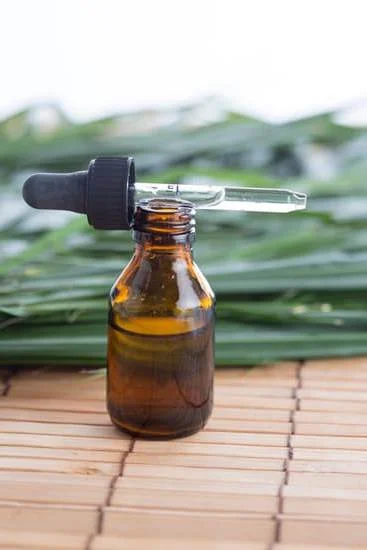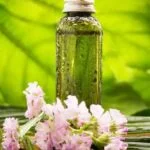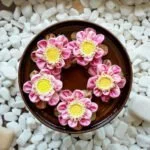A Handbook for Aromatherapy Practice has long been a staple for both beginners and experienced practitioners in the field. The 2nd edition brings with it updated information, key additions, and insights to further enhance the practice of aromatherapy. This comprehensive guide is not only a valuable resource for those seeking certification and training in aromatherapy, but also for individuals looking to incorporate its benefits into their daily lives.
Aromatherapy, the use of essential oils and aromatic compounds for therapeutic purposes, has gained popularity in recent years for its various wellness benefits. From stress relief to improved sleep and mood enhancement, aromatherapy has been proven effective in promoting overall well-being. In this introductory section, we will explore the fundamental principles of aromatherapy and delve into the numerous benefits it offers for physical, emotional, and mental health.
The 2nd edition of A Handbook for Aromatherapy Practice builds upon its predecessor by providing updated information on best practices, safety guidelines, and case studies from successful practitioners. This section will offer an overview of the key updates and additions featured in the latest edition, highlighting how it continues to serve as an indispensable resource for both professionals and enthusiasts alike.
Overview of the 2nd Edition of a Handbook for Aromatherapy Practice
The 2nd Edition of A Handbook for Aromatherapy Practice comes as an updated and expanded guide to the world of aromatherapy. Building on the success of the first edition, this new version offers a comprehensive overview of the practice, benefits, and safety measures associated with aromatherapy. With a focus on practical application and real-life case studies, this edition aims to provide both beginners and experienced practitioners with valuable insights and knowledge.
Expanded Coverage of Essential Oils
One of the key updates in the 2nd Edition is the expanded coverage of essential oils. Readers can expect to find detailed information on a wider range of essential oils, including their properties, uses, and possible combinations for different purposes. The addition of new essential oils not only enhances the depth of knowledge but also allows practitioners to explore more options in their aromatherapy practice.
Integration of Scientific Research
In line with the growing interest in evidence-based practices, the 2nd Edition incorporates scientific research findings related to aromatherapy. This inclusion adds credibility to the information provided in the handbook and encourages readers to approach aromatherapy from a more informed perspective. By bridging traditional wisdom with modern scientific evidence, this edition reinforces the value of aromatherapy as a holistic approach to well-being.
Practical Guidelines for Application
Another significant addition in this edition is the inclusion of practical guidelines for incorporating aromatherapy into various aspects of daily life. From diffusing essential oils at home to using them for self-care routines, readers will find helpful tips and suggestions on how to make aromatherapy a natural part of their lifestyle. The emphasis on practical application makes this handbook an invaluable resource for anyone looking to reap the benefits of aromatherapy beyond professional practice.
Key Updates and Additions in the 2nd Edition
Since the release of the first edition, A Handbook for Aromatherapy Practice has seen significant updates and additions in its second edition. These changes are aimed at providing readers with the most current and comprehensive information on the practice of aromatherapy.
New Essential Oil Profiles
One key update in the 2nd edition is the inclusion of new essential oil profiles. This addition provides readers with detailed information on additional essential oils, including their therapeutic properties, uses, and safety considerations. The expanded range of essential oil profiles allows practitioners to have a more extensive selection of oils to work with in their practice.
Advanced Blending Techniques
The 2nd edition also includes updates on advanced blending techniques, offering practitioners a deeper understanding of how to create effective and personalized blends for clients. These advanced techniques take into account factors such as individual health conditions, emotional well-being, and specific therapeutic goals.
Updated Research and Evidence-Based Practices
Furthermore, the 2nd edition incorporates updated research and evidence-based practices in aromatherapy. Readers will find new insights into the scientific basis of aromatherapy, as well as recent studies supporting its effectiveness in various applications. This addition ensures that practitioners are equipped with the latest knowledge and information to inform their practice.
Overall, the key updates and additions in the 2nd edition of A Handbook for Aromatherapy Practice reflect the evolving landscape of aromatherapy and aim to provide practitioners with a comprehensive resource that meets their professional needs.
The Importance of Aromatherapy Certification and Training
Aromatherapy is a holistic healing treatment that uses natural plant extracts to promote health and well-being. While it may seem simple, the practice of aromatherapy requires proper training and certification to ensure safety and efficacy. Aromatherapists undergo extensive education and training to understand the properties of essential oils, their effects on the body, and how to use them properly.
In recent years, the demand for certified aromatherapists has grown significantly as more people seek alternative and complementary approaches to healthcare. This surge in interest has highlighted the importance of obtaining proper certification and training in aromatherapy. Certified practitioners are not only equipped with knowledge about essential oils but also have a thorough understanding of anatomy, physiology, and holistic health practices.
Obtaining certification from reputable organizations ensures that practitioners adhere to industry standards and best practices. These standards are crucial in providing quality care to clients while ensuring their safety. Furthermore, proper training in aromatherapy allows practitioners to understand potential contraindications, dosage guidelines, and how to create individualized blends that cater to specific needs.
According to the National Association for Holistic Aromatherapy (NAHA), becoming a certified aromatherapist typically requires completing a minimum of 200 hours of education from an approved aromatherapy school or program. These educational requirements encompass various topics such as botany, chemistry, ethics, safety guidelines, client consultation skills, blending techniques, and more. Through rigorous training and certification processes, professionals can confidently provide the benefits of aromatherapy while upholding ethical standards within the field.
| Benefits of Certification | Training Requirements |
|---|---|
| Quality care for clients | Minimum 200 hours of education |
| Safety assurance | Covering topics like botany, chemistry, ethics |
How to Incorporate Aromatherapy Into Daily Life
Aromatherapy can be easily incorporated into your daily routine, whether it’s for relaxation, mental clarity, or overall wellbeing. One simple way to use essential oils is through diffusion. By adding a few drops of your favorite essential oil to a diffuser, you can fill your home or workspace with a pleasant aroma that can uplift your mood and reduce stress.
Another way to enjoy the benefits of aromatherapy is by adding essential oils to your skincare routine. Incorporating oils like lavender or tea tree oil in your skincare regimen can help promote healthy skin and provide a soothing experience.
Many people also find it beneficial to use aromatherapy during meditation or yoga practices. Certain scents, such as frankincense or sandalwood, are known for their grounding and calming properties, making them ideal for enhancing mindfulness and relaxation during these activities. Additionally, creating personalized blends of essential oils for massage oils or bath salts can also be a luxurious way to incorporate aromatherapy into self-care rituals.
It’s important to note that while incorporating aromatherapy into daily life can be enjoyable and beneficial, it’s crucial to use essential oils safely and mindfully. Understanding the proper dilution rates, usage guidelines, and any contraindications for specific oils is essential in order to maximize the benefits of aromatherapy while minimizing any potential risks.
| Activity | Benefits |
|---|---|
| Diffusing essential oils | Uplifts mood and reduces stress |
| Skincare routine with essential oils | Promotes healthy skin and provides a soothing experience |
| Meditation/yoga practice with aromatherapy | Enhances mindfulness and relaxation |
Case Studies and Success Stories From Aromatherapy Practitioners
Aromatherapy has been gaining popularity as a holistic approach to health and wellness, with practitioners sharing their success stories and case studies. The 2nd edition of A Handbook for Aromatherapy Practice includes a section dedicated to these inspiring narratives, offering readers a glimpse into the real-life applications and benefits of aromatherapy.
In this section, readers will find firsthand accounts of individuals who have integrated aromatherapy into their personal lives or professional practice. These case studies highlight the diverse ways in which essential oils and aromatherapy techniques have been used to promote physical, mental, and emotional well-being. From relieving stress and anxiety to alleviating symptoms of chronic conditions, these stories demonstrate the versatility and effectiveness of aromatherapy.
Here are some key takeaways from the case studies and success stories featured in the 2nd edition:
- Anecdotes of individuals using specific essential oils or blends to address common ailments or improve overall health
- Testimonials from aromatherapy practitioners who have witnessed positive outcomes in their clients or patients
- Insights into the different methods of application, such as inhalation, topical use, or diffusion, and their respective results
These real-life examples serve as valuable references for both beginners and experienced users of aromatherapy, offering inspiration and practical guidance on how to incorporate essential oils into daily routines for therapeutic purposes.
Aromatherapy Safety and Best Practices
When using essential oils for aromatherapy, it is important to prioritize safety and follow best practices to avoid any adverse reactions. Essential oils are highly concentrated and potent substances that can cause skin irritation, allergic reactions, or even more serious health issues if not used properly. Therefore, it is crucial to dilute essential oils before applying them to the skin and perform a patch test to check for any potential sensitivities.
In addition to proper dilution, it is also important to be aware of the specific safety guidelines for each essential oil. Some essential oils should be avoided during pregnancy or by individuals with certain health conditions. It is essential to thoroughly research each essential oil before use and consult a certified aromatherapist for guidance if needed.
When diffusing essential oils in the air, it is important to ensure proper ventilation in the room to avoid inhaling large quantities of the oil. Overexposure to certain essential oils through inhalation can lead to respiratory issues or other health concerns. Following recommended usage guidelines and practicing moderation is key when incorporating aromatherapy into daily life.
In summary, understanding aromatherapy safety and best practices is essential for anyone interested in using essential oils for their therapeutic benefits. By prioritizing safety, proper dilution, and adhering to usage guidelines, individuals can effectively harness the power of aromatherapy while minimizing potential risks.
Resources and Further Reading for Aromatherapy Enthusiasts
For those who are passionate about aromatherapy and want to delve deeper into the practice, there are numerous resources and further reading materials available. Whether you are a novice or an experienced practitioner, these resources can provide valuable insight, tips, and techniques to enhance your aromatherapy practice. Here are some recommended resources for aromatherapy enthusiasts:
- Books: There are plenty of books on aromatherapy that cover various topics such as essential oils, blending techniques, recipes for skincare products, and the therapeutic benefits of different aromas. Some highly recommended books include “The Complete Book of Essential Oils and Aromatherapy” by Valerie Ann Wormwood, “The Fragrant Mind” by Valerie Ann Wormwood, and “Aromatherapy for Healing the Spirit” by Gabriel Mojay.
- Online Courses: Many reputable organizations offer online courses in aromatherapy for those interested in obtaining certification or simply expanding their knowledge. These courses cover topics such as essential oil safety, blending techniques, application methods, and the therapeutic uses of different oils.
- Aromatherapy Journals and Magazines: Subscribing to aromatherapy journals and magazines is a great way to stay updated on the latest research, trends, and developments in the field. Publications like the International Journal of Clinical Aromatherapy and AromaCulture Magazine provide valuable insights from experts in the industry.
In addition to these resources, attending workshops, seminars, and conferences related to aromatherapy can also be beneficial for enthusiasts looking to network with other practitioners and expand their knowledge base. By exploring these resources further, individuals can continue to deepen their understanding of aromatherapy and its application in various aspects of life.
Conclusion
In conclusion, A Handbook for Aromatherapy Practice 2nd Edition serves as a comprehensive guide for both beginners and experienced practitioners in the field of aromatherapy. The updated edition provides valuable insights into the benefits of aromatherapy, along with important updates and additions to enhance the reader’s knowledge and practice. With a focus on safety, best practices, and real-life case studies, this handbook equips individuals with the necessary tools to incorporate aromatherapy into their daily lives or professional practice.
The impact of aromatherapy has been widely recognized in promoting overall well-being, relaxation, and mental clarity. As more people seek natural alternatives for health and wellness, the future of aromatherapy practice appears promising. The inclusion of resources and further reading material in the handbook encourages continuous learning and development within the field, ensuring that practitioners stay informed about new research, techniques, and products.
As the demand for alternative therapies continues to grow, it is evident that aromatherapy will continue to play an integral role in holistic health practices. Whether used for personal self-care or integrated into clinical settings, incorporating aromatherapy into daily life has proven to have a positive impact on individuals’ physical, emotional, and mental well-being.
The 2nd edition of A Handbook for Aromatherapy Practice serves as a testament to the expanding influence and future potential of aromatherapy in promoting holistic health.
Frequently Asked Questions
Can I Sell My Own Aromatherapy Products?
Yes, you can sell your own aromatherapy products as long as they comply with the regulations and laws in your country or region. It’s important to do thorough research on the ingredients, labeling requirements, and safety standards for aromatherapy products before selling them to ensure that they are safe and legal for use by consumers.
What Are the 7 Essential Oils?
The seven essential oils commonly used in aromatherapy are lavender, peppermint, eucalyptus, tea tree, lemon, chamomile, and rosemary. Each of these essential oils has its own unique properties and potential health benefits when used in aromatherapy practices. It’s important to exercise caution and follow guidelines when using essential oils for aromatherapy to prevent adverse reactions or misuse.
How Old Is the Practice of Aromatherapy?
The practice of aromatherapy dates back thousands of years, with evidence of aromatic plant use found in ancient civilizations such as Egypt, China, and India. However, the modern concept of aromatherapy as a holistic healing practice originated in the early 20th century with the work of French chemist René-Maurice Gattefossé.
Since then, aromatherapy has gained popularity worldwide as a complementary therapy for various physical and emotional ailments.

Are you looking for a natural way to improve your health and wellbeing?
If so, aromatherapy may be the answer for you.






